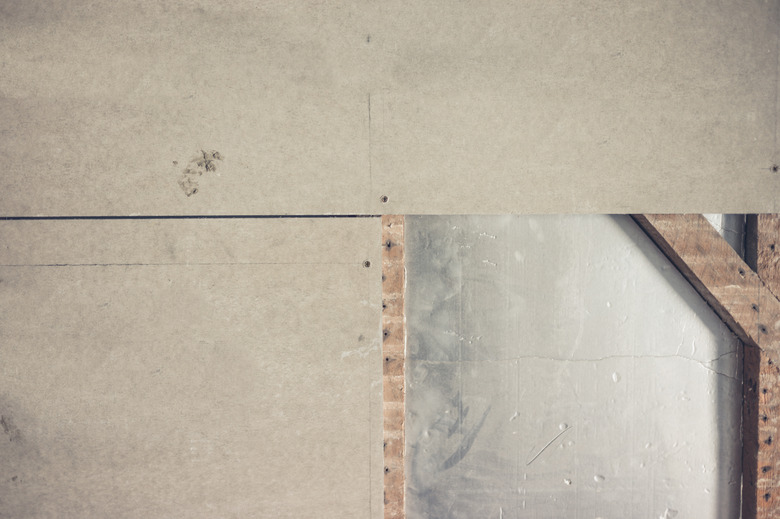How To Install WonderBoard
WonderBoard is a popular brand of cement backer board, or cement board. It's similar to such competing brands as HardieBacker, Durock and Fiberock. If you're installing tiles or stonework on the floor, on walls or on a countertop, you need an underlayment of cement board for stability and moisture protection, and WonderBoard fits the bill. Working with it is similar to working with drywall, but it's heavier and trickier to cut, it requires special fasteners and you tape it with mortar, not joint compound.
Tips for Working With WonderBoard
Tips for Working With WonderBoard
The materials in WonderBoard include Portland cement, fiberglass, and EPS (expanded polystyrene) beads, and aggregates. The manufacturer recommends cutting it by scoring it with a knife and breaking it, just as you would cut drywall, but you can also cut it with a circular saw. It dulls cutting blades quickly, so have spares on hand, and it generates clouds of cement dust when using a power saw, so a respirator and goggles are essential.
WonderBoard is designed for use in wet places, but it isn't a moisture barrier. When installing it on a wall or floor subject to moist conditions, you should first staple a moisture-proof material such as tar paper, #15 felt or 4-mil polyethylene sheeting to the studs or floor joists. The WonderBoard goes on top of this barrier.
The recommended procedure for installing fiber cement board such as WonderBoard on the floor calls for first spreading a layer or mortar. This stabilizes the backer board, levels it and prevents cracks in the tiles or tile grout. Spread the mortar with a notched trowel and lay the backer board while the mortar is still wet.
Instructions for Cement Board Installation
Instructions for Cement Board Installation
WonderBoard comes in 3 x 6-foot sheets. It's best to install as many full sheets as possible before you start cutting sheets to fill gaps. When installing on a plywood subfloor, stagger the seams, and do not align the edges of the sheets with the plywood joints. When installing on the wall, the edges of the sheets must overlap the studs.
- Mark the position of each sheet on the floor.. Apply a layer of thinset mortar to the subfloor, using a 1/4 x 1/4-inch square-notch trowel. Lay the WonderBoard sheets onto the motar. Be sure to leave a 1/4-inch gap at the walls and a 1/8-inch gap between sheets. When installing on walls, you may have to cut the sheets to ensure the joints occur in the middle of a stud face.
- Fasten the sheets to the wall studs or subfloor with 1 1/4-inch stainless steel or enamel-coated screws. You'll find these screws at hardware stores in packages that state they are intended for cement board. In a pinch, you can also use 1 1/4-inch galvanized roofing nails.
- Tape and finish the seams with mortar and fiberglass tape after you've installed all the sheets. The process is similar to finishing drywall seams. Spread the mortar with a drywall knife, lay the tape into the mortar, then smooth the tape with the knife so it is embedded into the mortar and is flat on top.
Keep These Things in Mind
Keep These Things in Mind
The edges of the WonderBoard must overlap a framing member. Do not simply screw the edge to plywood. The resulting structural instability could ruin the tile.
The heads of screws and nails should be flush to the surface, but don't try to recess them as you would drywall screws and nails. You could crack or chip the material. Space fasteners by 6 to 8 inches on both the edges and middle of the sheet, and keep them 2 inches from the edges.
Allow at least 24 hours for the mortar to set before installing tiles on top of WonderBoard.
